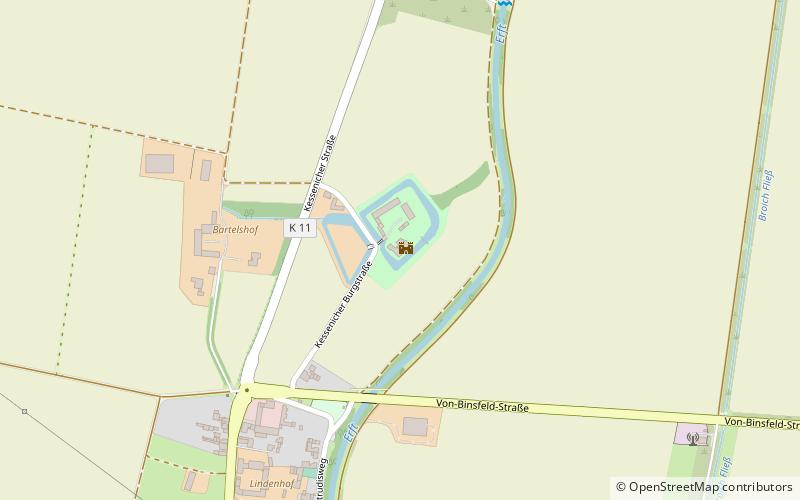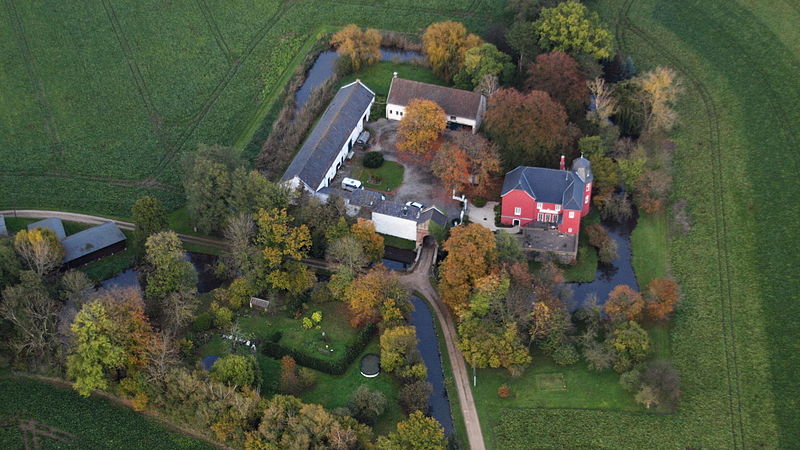Burg Kessenich, Euskirchen


Facts and practical information
Kessenich Castle is located on the northern edge of the district of the same name in Euskirchen, the district town on the northern edge of the Eifel. In the immediate vicinity of the castle flows the Erft River. In the basic features it is a two-part moated castle.
In 1339, the castle is mentioned for the first time in a document, when Otto von Kessenic gave it in fief to the Margrave of Jülich. Thus the lord of the castle bowed to the pressure of the Jülichers, who consistently pushed the expansion of their territorial power and were able to achieve the acquisition of Euskirchen in 1355. On January 13, 1363, his heir Ludwig von Kessenich sold the property to Reinhart von Binsfeld. The Binsfeld family became indebted in the course of time, lost other fiefdoms, but was able to regain unrestricted use of the castle in 1514.
Heinrich von Binsfeld zu Stamge, Lord of Merzenich, princely councilor and marshal since 1575, gave the medieval castle a new shape. In 1565 he also became bailiff in Blankenberg. His daughter Elisabeth married Johann Richard Waldbott von Bassenheim in 1586 and brought the castle and the parental property in Kessenich and Merzenich as inheritance in 1604.
The next reconstruction of the castle dates back to the thirties of the 17th century, arranged by the then owner, the imperial and electoral Palatine councilor, Heinrich Waldbott von Bassenheim, who was also bailiff of Nideggen and Jülich. After 1769 the castle belonged to a baron von Kleist. In 1828 the estate passed into bourgeois ownership. In 1884, the castle was acquired by J.W. Arnolds, whose descendants still own the castle today.
Euskirchen
Burg Kessenich – popular in the area (distance from the attraction)
Nearby attractions include: Eifel-Therme Zikkurat, Kriegshoven Castle, Mueller Cloth Mill, Schloss Miel.







